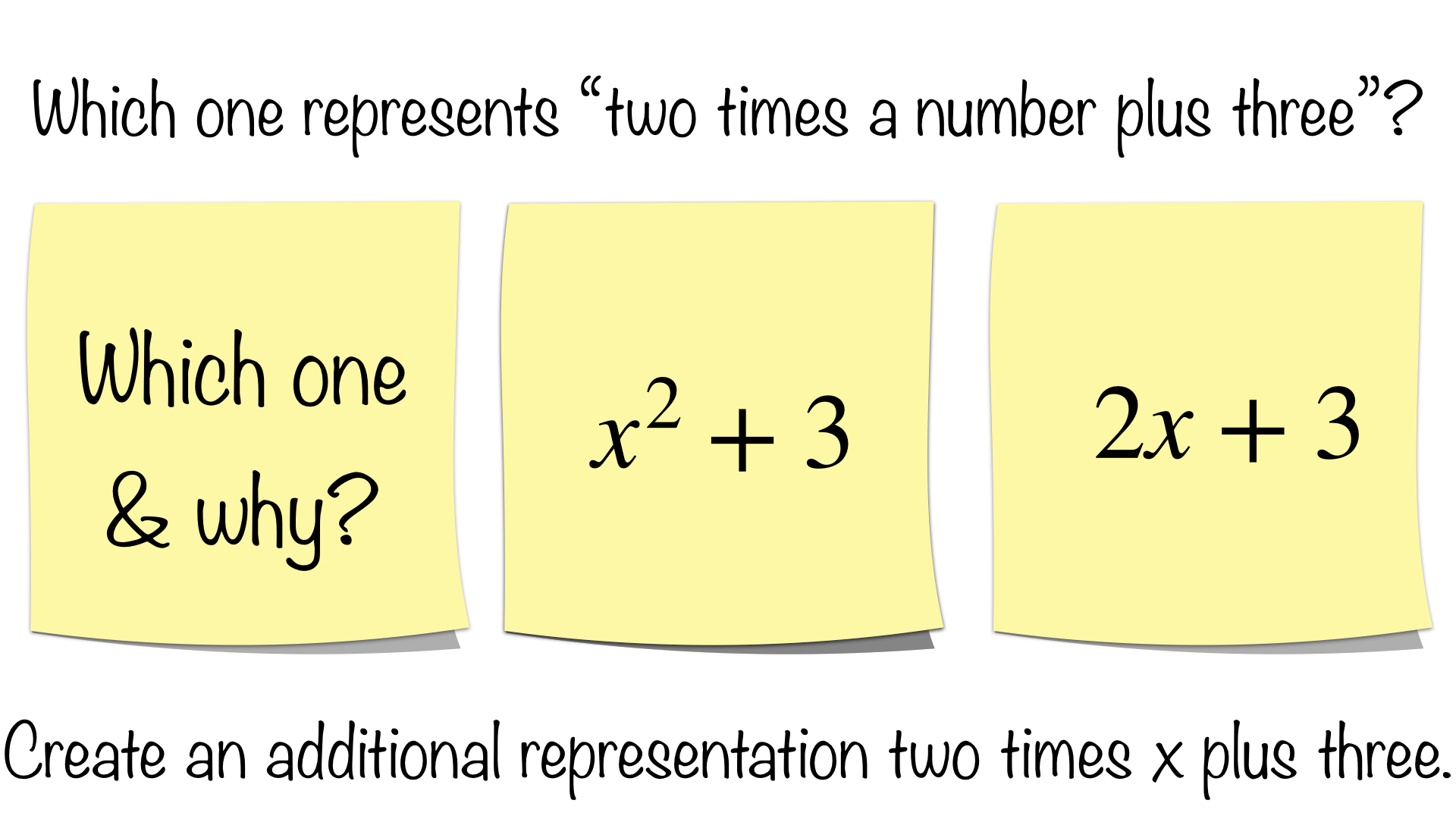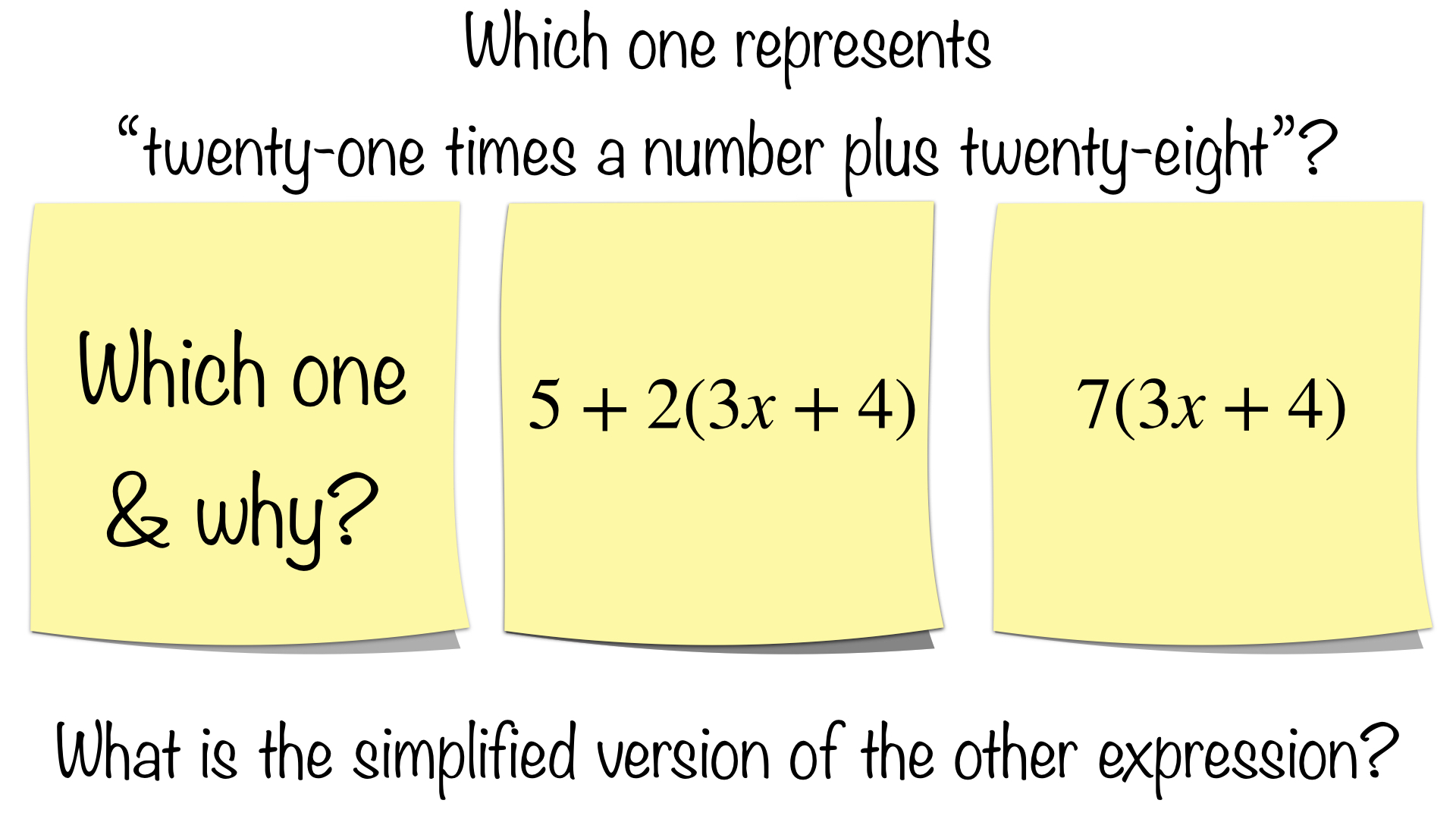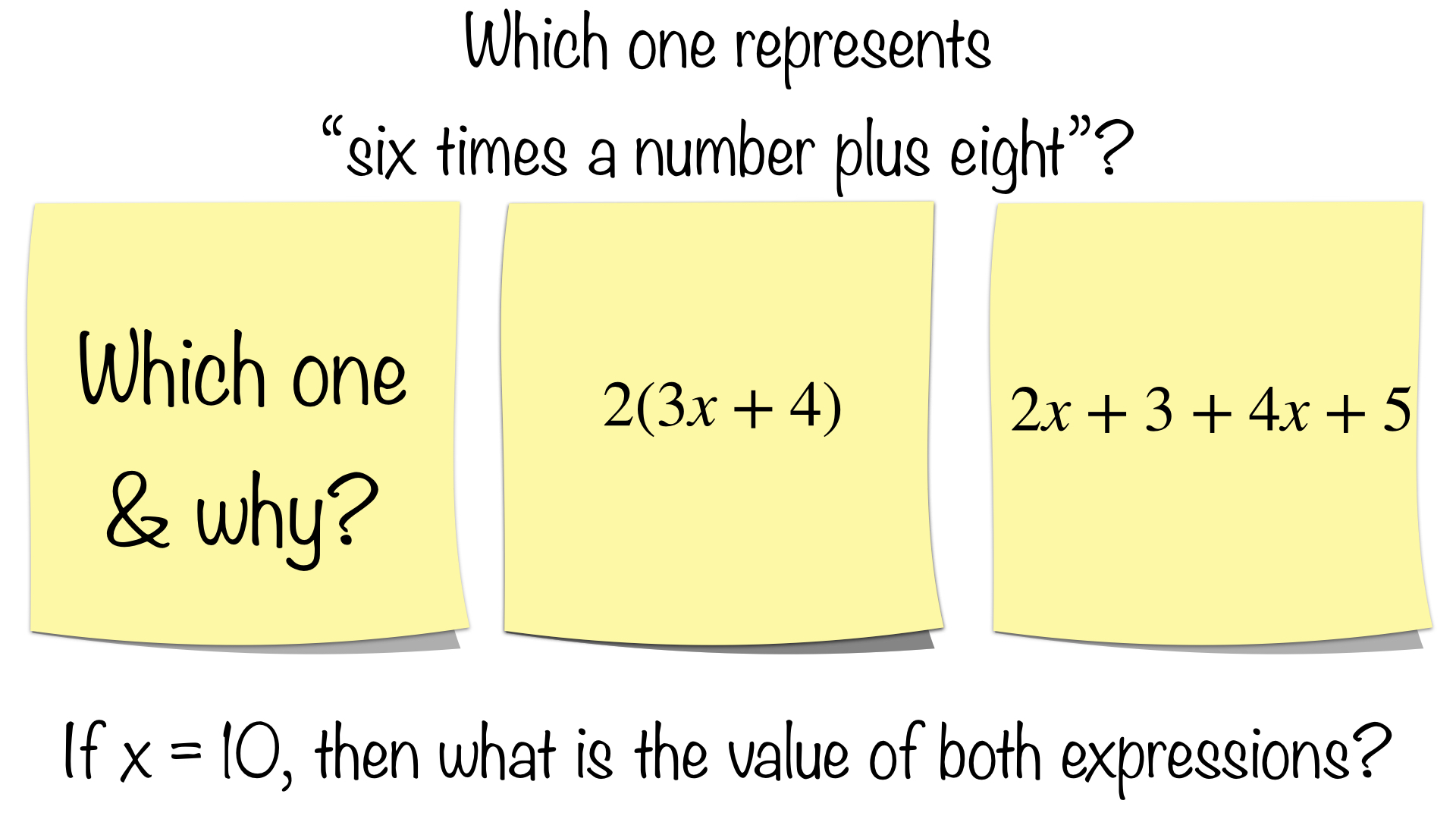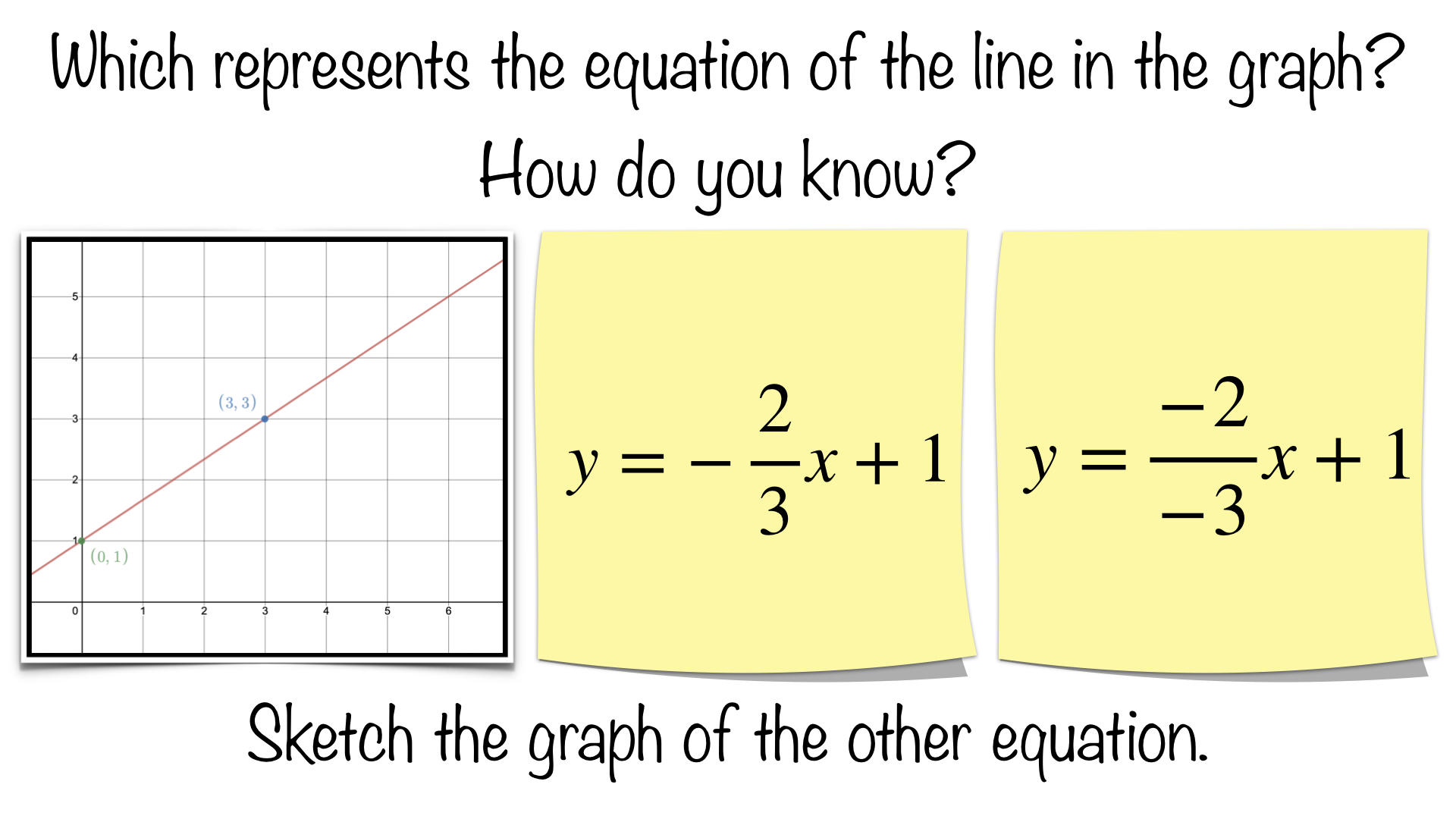Common Core Standards (different examples support different standards): 6.EE.A.2, 7.EE.A.1, 8.F.A.2, 8.F.A.3, HSA.SSE.A.1.A, HSF.IF.B.4
Besides using Sticky Math to compare two different representations or match representations, you could provide two nonequivalent prompts in a singular representation. For example, below we have two nonequivalent expressions in a single representation, abstract symbolic:
At first glance, this seems overly simplistic; however, students often struggle with understanding and using exponents. This is a good example of a time when students might be procedurally proficient, but not procedurally fluent. They may be proficient in performing operations on or with exponents; however, they demonstrate a lack of procedural fluency when having to flexibly apply their use to interpreting expressions.
Students should choose a representation and construct a viable argument to defend their selection. As one student or group of students defend their argument, the others should be engaged through math talk moves and asked if they agree or disagree and why (MP3).
Notice that while there is no blank sticky on the image above to remind you, students can still use their third sticky to create an additional representation of two times x plus three. Other representations might include drawing algebra tiles or writing an equivalent expression like 1x +3 + 1x.
Here is another example centered on confronting a common misconception head on:
This Sticky Math Which One & Why? is designed to create cognitive dissonance with those students who would ignore order of operations and add 5 + 2 in the left expression to incorrectly get an equivalent expression.
Notice they are asked to simply one of the expressions as an added layer of formative assessment; they can do this on their third sticky. While this Which One & Why? acts as a formative assessment of the common misconception, the instruction that precedes it or follows it should be done in context. For an example of how to do this, see the presentation from MaTHink 2020 called Algebra as Area: Distributive Property at Meaning4Memory.com/presentations. On the left sticky, you cannot combine the 5 with the 2 because the 5 refers to a number of items while the 2 refers to a number of groups. You would first have to find the number of items in the the two groups before adding them to the other 5 items. Students need context to grasp this. The context in the previously mentioned presentation linked above is picking apples. Applying that context here would go something like this, “Two parents picked 3 baskets of x apples plus they each picked up four apples from the ground while their child picked up 5 apples from the ground. Write a simplified expression for how many apples they picked in all.” Students should be able to decontextualize the prompt into an expression; however, they should also be able to contextualize as they simplify. If they did, then they would realize that they should not be combining a number of apples, 5, with a number of parents, 2.
If you wanted to use this Which One & Why? even more formatively, then you could introduce the possibly that both expressions were correct first like in this example:
You may want to introduce one like this early to open up the chance that both stickies could be correct in future iterations of the activity.
Notice this activity includes an extension of evaluating both expressions when x = 10. It can be done on a single third sticky by writing small. This can act as a formative assessment of this skill; however, it also provides a specific case to demonstrate that both expressions are numerically equivalent. Students may choose to evaluate the two original expressions or their simplified versions; this provides an opportunity for further comparison and connections when having students debrief the activity (EMTP: Elicit & Use Evidence of Student Thinking).
These final two examples demonstrate applying Which One & Why? to something other than expressions and a different type of representation, a graph:
This example intentionally excludes a more obvious symbolic notation of a positive slope. Do students understand how the slope in the right sticky is reflected in the graph? Or, do they just make two negatives a positive according to some memorized rule that they may or may not understand? If they do change it to a positive slope, then you have an opportunity to have students compare and contrast the methods and how it moves you along the line as they help debrief the activity (EMTP: Elicit & Use Evidence of Student Thinking).
Do students understand that the negative in the left sticky does not distribute to both the numerator and the denominator? The prompt forces a choice; however, if they are open to choosing both like the previous example suggests, then they might incorrectly suggest that neither would match the graph or both would match the graph (thinking it distributed to both the numerator and the denominator).
Notice once again that the prompt extends to formatively assess a different skill, graphing. Sometimes textbooks make an error of excluding this type of interaction by having students select a matching graph when the standard specifically states, “Students graph…” This extension provides them the chance to graph the unmatched linear equation.
Here is a different way to interact with graphical representations:
This Sticky Math Which One & Why? focuses on the solution to a quadratic equation rather than moving along the graph itself.
Notice that the prompt extends to formatively assess whether or not they know what the graph of a single solution looks like. They can sketch the graph on a regular sticky or use Post It Grids:
How are your students using Which One & Why? What connections are your students making? What modifications are you making to use this with students? We would love to hear your feedback; please submit a comment below or consider submitting your own Sticky Math activity here.




